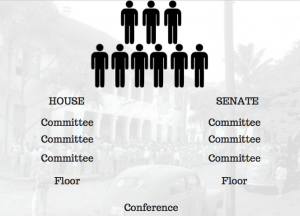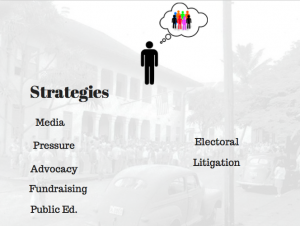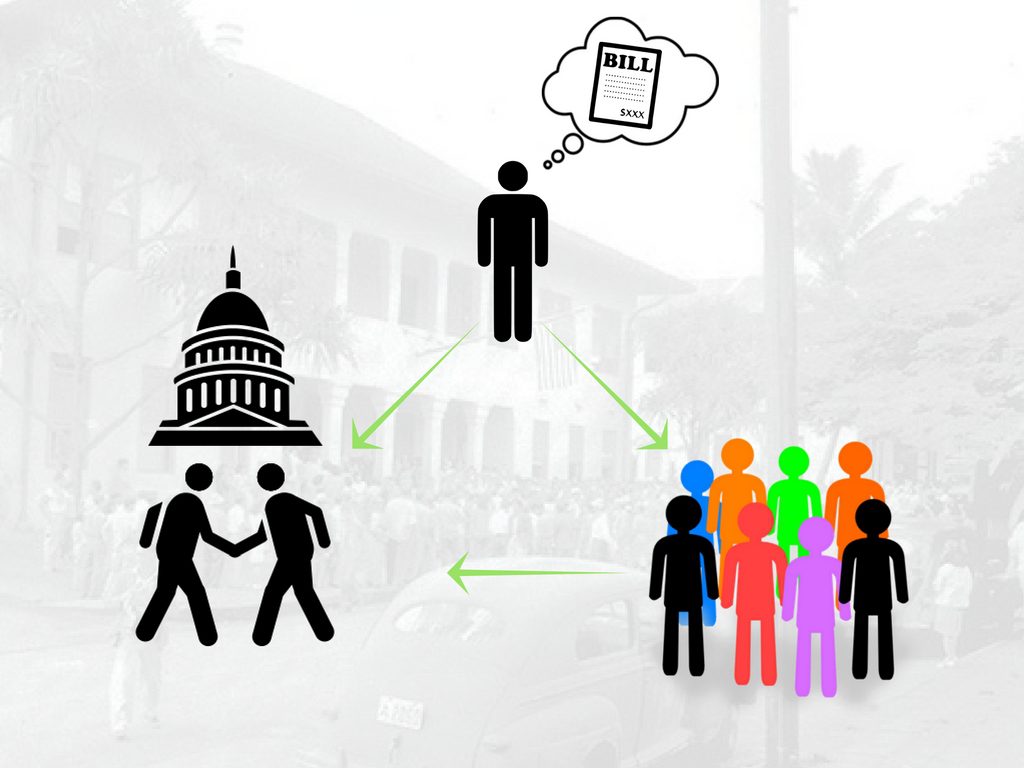Four Steps to Win a Grassroots Advocacy Campaign
You need to influence a policy but need some help?
Follow these steps, and above all, know that you need to consider both your “inside” strategies and tactics, and your “outside” ones.
Inside strategies refer to how you’ll build alliances with committed legislators to usher your bill through the process.
Outside strategies and tactics refer to how you’ll complement your inside strategic timeline with awareness, media, and public influence to support your position on your policy or policies.
The more controversial your policy (think constitutional amendment), the more you’ll need outside support, the less controversial (think resolution that puppies are great), the less public pressure you’ll need.
Step 1: Find Your Legislative Champion & Draft the Bill
Find a legislator who is commited to taking your bill to the finish line with you. If you can afford to hire a local lobbyist, you may want to consider that. Legislators typically divide up into “voting blocks” so you should try and find out who’s voting with whom. Legislators in big voting blocks typically have more chances of passing your bill, but that’s not always the case. The main thing you want is a champion who is commited to getting it passed. Have your champion request the bill to get drafted (legislators can request a bill to be drafted by government staff lawyers).

Step 2: Make an Inside Plan to Pass the Bill
Your champion will also usually be your bill sponsor. You’ll also want to find as many sponsors and co-sponsors of the bill as you can. Follow your champion’s lead — she or he should know who the best people are to be co-sponsors and how to bring them on; but you need to be ready to help. Ideally, committee chairs of the committee your bill would go through are ideal (every bill is given a “committee assignment” — the committees the bill must pass through).
Which committees are likely to pass the bill through? Which committees are not likely? How can you influence the committee chairs, and does the House or Senate leadership support the bill for the floor vote? These are all questions you’ll need to walk through with your bill sponsors.

Step 3: Make an Outside Plan
When making an outside or field plan, just keep in mind a) strategies, b) tactics, and c) timeline and tactical goals
Strategy 1: Media — garnering media hits should almost always be rolled into you overal plan. Typically this is thought of as 1) earned media (news covers your issue because it’s a hot topic, 2) paid media (you purchase ads), and 3) social media.
Media Tactics: press releases, earned media, paid media, TV, newspaper, radio, social media, editorials, short videos for social media, memes for social media, infographics.
Strategy 2: Grassroots Pressure — this strategy encompasses any tactic that is designed to put some pressure on decision-makers to do what you want them to do. The messaging on these tactics can vary widely depending upon your circumstances.
Grassroots Pressure Tactics: canvassing, rally/signwave, lit drop, birddogging, targeted tweets, emails to targets, phone calls to targets, lobby day, thunderclap, direct mail, text to call
Strategy 3: Grasstops Pressure — “Grasstops” refers to finding advocates who are V.I.P.s in the community (celebs, athletes, business owners, media personalities, etc). Bring them into the fold and ask them to advocate with you.
Grasstops Pressure Tactics: Lobby meeting, paid advertisement, video or image meme for social media
Strategy 4: Fundraising & Capacity Building — This sort of goes without saying and should go hand in hand with most of your activities. Set goals around building up your email lists and think about how to raise money around your efforts.
Capacity Building Tactics: coalition-building, grants, fundraising event, direct mail, online petition, tabling at community events, canvassing
Strategy 5: Public Education — This too should be wrapped into the fabric of other stratgies. The one case in which this is a stand alone strategy is when it’s a ballot question (e.g. “Yes on 5”). In a ballot initiative the public decides.
Public Ed Tactics: sign waving, lit drop, newspaper ad, social media, house parties, TV ad, PSA, etc. I remember one campaign where volunteers held banners on freeway overpasses leading to election day.
Strategy 6: Research — Having a report or poll to back up your campaign is usually a good idea. Be careful not to get too bogged down with this though.
Strategy 7: Electoral — It may be the case that you need to start getting involved in supporting and opposing candidates in order to get support for your issue. You’ll typically need to set up a seprate organizational entity to do this kind of work, but the outcome can often be worth it.
Strategy 8: Litigation — Filing a lawsuit may be the best way for you to get your desired outcome. This usually takes a lot of resources, but there are often legal firms out there to help.
Strategy 9: Advocacy — This is your inside plan. Plan to meet with as many legislators as possible on your issue.
Step 4: Make a Timeline With Tactical Goals
Set up your timeline based upon the number of weeks in the campaign, and start planning. This way, you’ll know exactly what to be prioritizing on any given week.
First, put in any fixed dates. If you’re working on a bill, add in when the bills have to clear the house or senate. What is the deadline for the governor to sign or veto? When does the bill or bills need to clear their committees.
Second, set your tactical goals. How many earned media hits are you going for on TV, radio? How many people do you want to add to a facebook group? How many impressions do you need on your infographics? How many emails do you want to send, and to which committees? Sync this up with your inside plan to target the committee chairs who need the most encouragement or pressure. When do you want to have met with every legislator?
Third, plan out your weekly priorities in order to hit your goals. Typically the beginning of the campaign involves drafting a bill, setting up systems, raising money, finding your bill champions, creating an endorsement form to build your coalition of groups, etc.
As the campaign moves on you’ll start digging into your programmatic tactics — creating press releases, meeting with legislators, mobilizing volunteers, sending out email action alerts, etc.
Tips & Pitfalls
1. Be a planner. Planning will help you constantly keep your eyes on the prize and focus on priorities. It also helps you better identify opportunities that pop up and to spirit your way to success.
2. Collaborate. Build a coalition and work with others. You’ll almost always get farther.
3. Be flexible. Usually, some kinds of great opportunities will present themselves. Be flexible enough in your plans to shift things on the fly.
4. Be creative. One time I was part of a campaign that used a huge inflatable Smokey the Bear that we used for press events. We were always able to gain media attention and traction with it. Think outside of the box!



